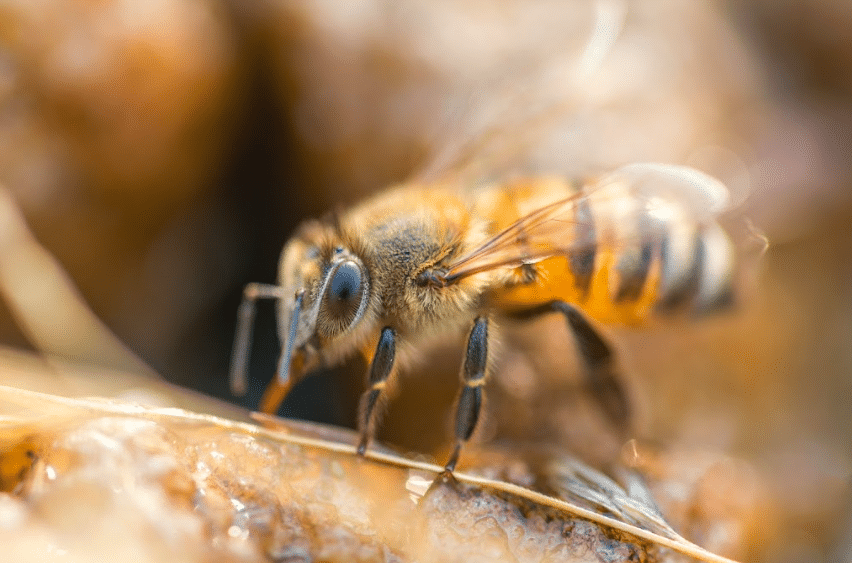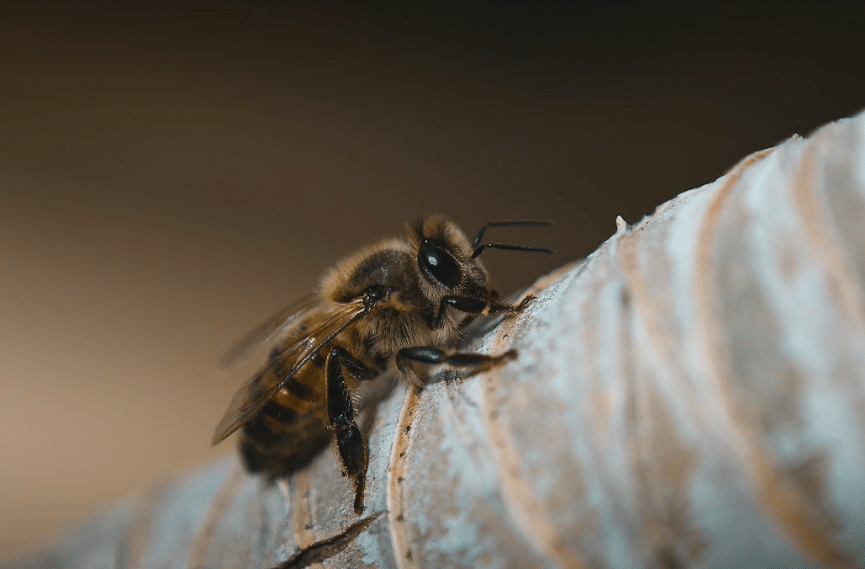California, specifically its Central Valley, is the world capital of almond production, and its a tangible example of the changes happening to the climate and their consequences. Almond production in California makes up %80 of total worldwide and %100 of the USA’s commercial output, that amounts to a staggering 5100 square kilometres of land and 1 billion 300 million tons produced annually, with an overall value of 5 billion dollars.
However, in spite of California being the US state with the largest number of bee colonies, estimated at about 740,000, in the blooming season for almond trees, these aren’t even enough – the massive almond industry has to rely on the indispensable help of beekeepers that move their hives from all over the United States in February to help pollinate the trees, that have to be cross-pollinated to produce their fruit. Comprehensively, about 650 thousand hives are imported to California, with a cost of 300 dollars for each one, providing crucial income to beekeepers (in the USA, pollination services often yield higher revenues than selling honey, especially for commercial beekeepers). This phenomenon is due to exemplary climate change causes, and in turn has its far-reaching effects.
If you think about it, why would a state like California, rich and welcoming in terms of weather, nature, and flora, not have enough bees to service the almond trees in the state?
Well, the first reason may be that the size of almond production is artificially huge compared to the natural resources the state has, but on the other hand, the prolonged drought in California doesn’t allow for the necessary water and plant life to support the amount of bees needed. Since around the yar 2000, USA’s southwestern states have been undergoing a megadrought, defined as a period of prolonged abnormally low levels of precipitation. Regardless of more or less annual rain storms, they’re not enough to offset the damage of years of little to no precipitation. Thus, the only solution, like is common these days, is to import the bees needed.
Nonetheless, this solution to the problem isn’t waterproof because bees today are faced with challenges threatening their survival connected to the environment and ongoing climate change. The conflict between pesticides and pollinators, for one, is a big issue in the USA because of the way agriculture is practiced – with huge amounts of the same crop planted in highly concentrated areas, with a related rise in the vulnerability of the crop to disease and thus the necessity of pesticides, many of which are toxic to bees. It’s one of the reasons that beekeepers in the USA lose about 40% of their hives yearly. The other reasons are less clear, but one of the worst, first documented in 2006, is colony collapse disorder, whose cause remains a mystery, but it’s possible that the way beekeepers are forced to work their bees to survive is responsible – without affording them their natural hibernation, bees are moved from one state to the other throughout the year to pollinate numerous plants in their various seasons of blooming, and to avoid colder temperatures that might lead them to hibernate. This approach to beekeeping’s effects isn’t actually clear, but the probability that working bees year-round, in contrast to their natural summer-winter cycle, might be damaging is high.
These stressors on bees, even the better-protected domestic kind, that are a provisional solution to the shortage of natural pollinators, have pushed scientists like Barbara Bar-Imhoof and her husband Boris Baer at the Center for Integrative Bee Research (CIBER) at the University of California, Riverside, to create a hybrid bee with a mix of African, European, and South American honeybee qualities that would be able to better adapt to the challenges posed to them today, adeptly called “survivor bees”.
The ideas lies in looking for a bee that would be able to withstand conditions like drought, a year-round work schedule, and the capacity to recognize and avoid pesticides by recognizing their smell. It’s definitely not a sure win, and many beekeepers aren’t very confident about the possible results because of a hybrid bee’s unpredictable collateral effects and the bigger issue – climate change – not being solved anyway, always increasing the challenges bees face.

